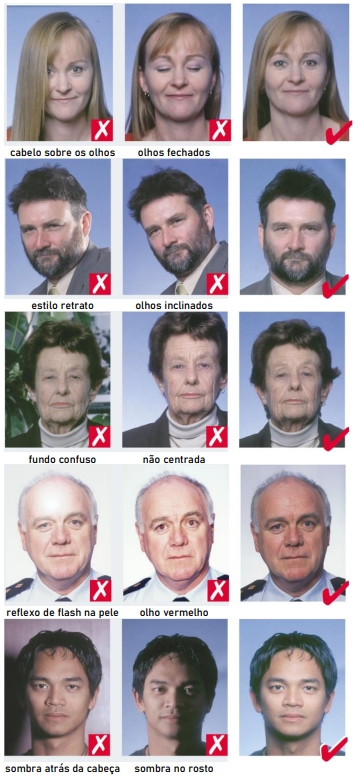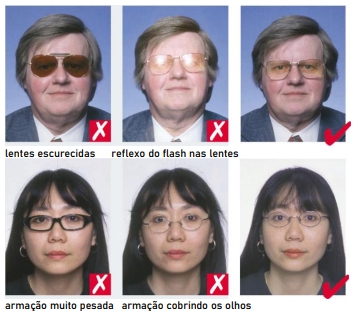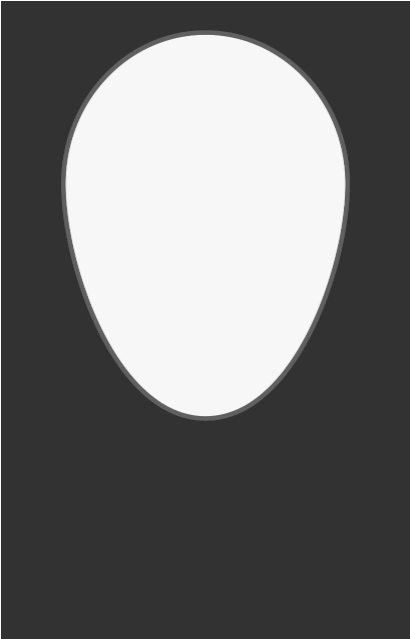Capture standard (without SDK)
In this section, you will find how the capture standard for the user's selfie should be if you do not use our SDKs
To achieve better results in image capture, a capture standard has been defined. The image should be clear with sufficient frontal lighting. The face should be straight, facing the camera, free from objects or obstructions, and with a neutral expression.
Common issues in captured images include:
Lighting behind the client: Frontal lighting must be strong enough for a clear capture of the face.
Overexposed lighting: Frontal lighting needs to be adequate for a sharp capture.
Face too close to the camera: The face should be centered in the camera frame with proper lighting.
Blurry images: The person’s face needs to be well-focused at the moment of capture.
Shaky images: Stabilize the camera during capture.
Client wearing glasses: The client should not wear glasses or objects that obstruct full visibility of the face.
How to Obtain a Good Image Capture
For obtaining and sending images, the ICAO standard is used. The ICAO (International Civil Aviation Organization) standard defines characteristics for a photograph to comply with the following requirements and recommendations for image capture and submission settings:
Face Positioning and Additional Information:
The photo should be taken from the front — look directly at the camera and keep the head upright. The face should be centered. The shoulders should be aligned and parallel to the camera's image plane.
The eyes should be naturally open — pupils and irises visible.
Glasses — the photo should be captured without glasses.
No hats, caps, or masks — the face area should be clearly visible.
Neutral expression — the face should have a neutral expression, the person should not smile, raise eyebrows, squint, or frown.
Hairstyle — Hair should not cover the visible eye area.
Lighting and Background: The background should be light, smooth, and without texture. It should not contain spots, lines, or curves visible in the captured image. Light colors like light blue or white can be used as long as there is sufficient contrast between the face/hair and the background. Camera color settings should not be altered depending on the background color. There should be no shadows behind the face image. Additionally, no visible objects should be present in the background, such as people, furniture, patterned wallpapers, or plants. The lighting should be adequate and uniform, equally distributed across the face so there is no difference between the left and right sides. The photo should have good brightness and contrast between the hair, face, and background. Poor lighting occurs when light is only from the side, top, or bottom.
Image formats: JPEG, PNG, or JWT.
Images should be captured in color.
Sizes/Proportions
Selfies:
Recommended size: Aspect ratio 1920x1080 or 1080x1920;
Orientation: Portrait;
Size: Maximum 800kb, if necessary you can compress it to Jpeg92.
Documents:
Recommended Size: HD ratio - 1280x720 or 720x1280;
Minimum Size: VGA ratio - 640x480 or 480x640;
Orientation: If OCR is used, it is recommended that the image be captured in reading orientation;
Size: Maximum 800KB. If necessary, you can compress to Jpeg92;
Framing: It is recommended that the image has no unnecessary space (no borders). The larger the unused area (border), the worse it will be for document classification.
Examples of Standard and Non-Standard Photos:
The photo must include:
Color
Proper framing
Sharp and clear focus, free of ink marks or creases.

Look directly at the camera.
Show the natural skin tone.
Have appropriate brightness and contrast.

Neutral expression and eyes clearly visible.
No hair covering the eyes.
Facing the camera directly, without looking over the shoulder or tilted, and showing both edges of the face clearly.
With a simple light-colored background, preferably white.
With even lighting, no shadows or flash reflections on the face, and without red-eye.
No colored contact lenses.
No makeup.

The use of glasses is not recommended; however, if necessary:
The eyes must be clear, without reflections from flash or ambient light on the glasses, and without colored lenses.
The frame must not cover any part of the eyes.

Tips
Add instructions before capturing for the user:

Use capture "frames" to guide the client's positioning in front of the camera:

Still need help?
Didn't find something or still need help? If you're already a client or partner, you can reach out through our Help Center.
Last updated